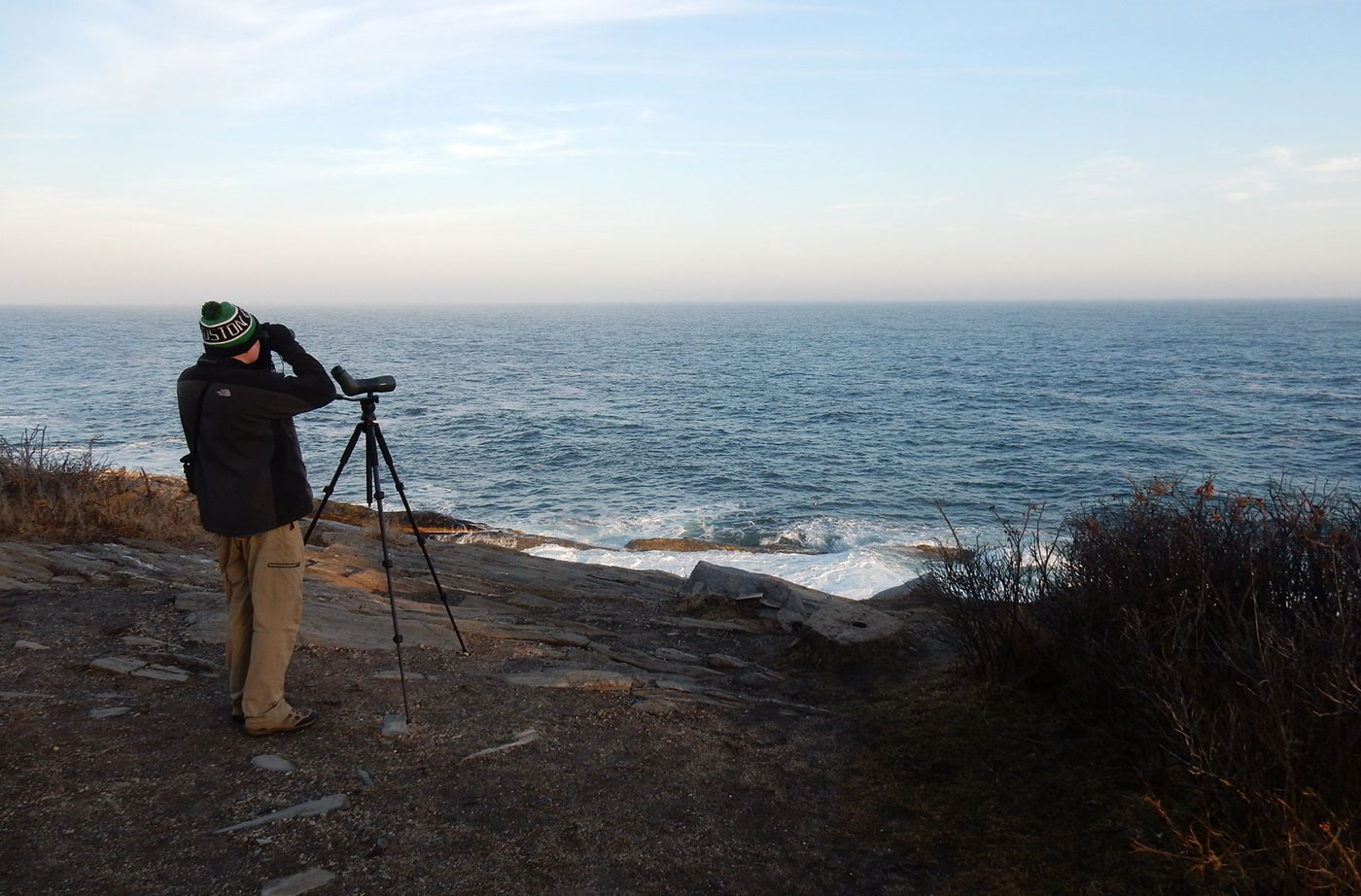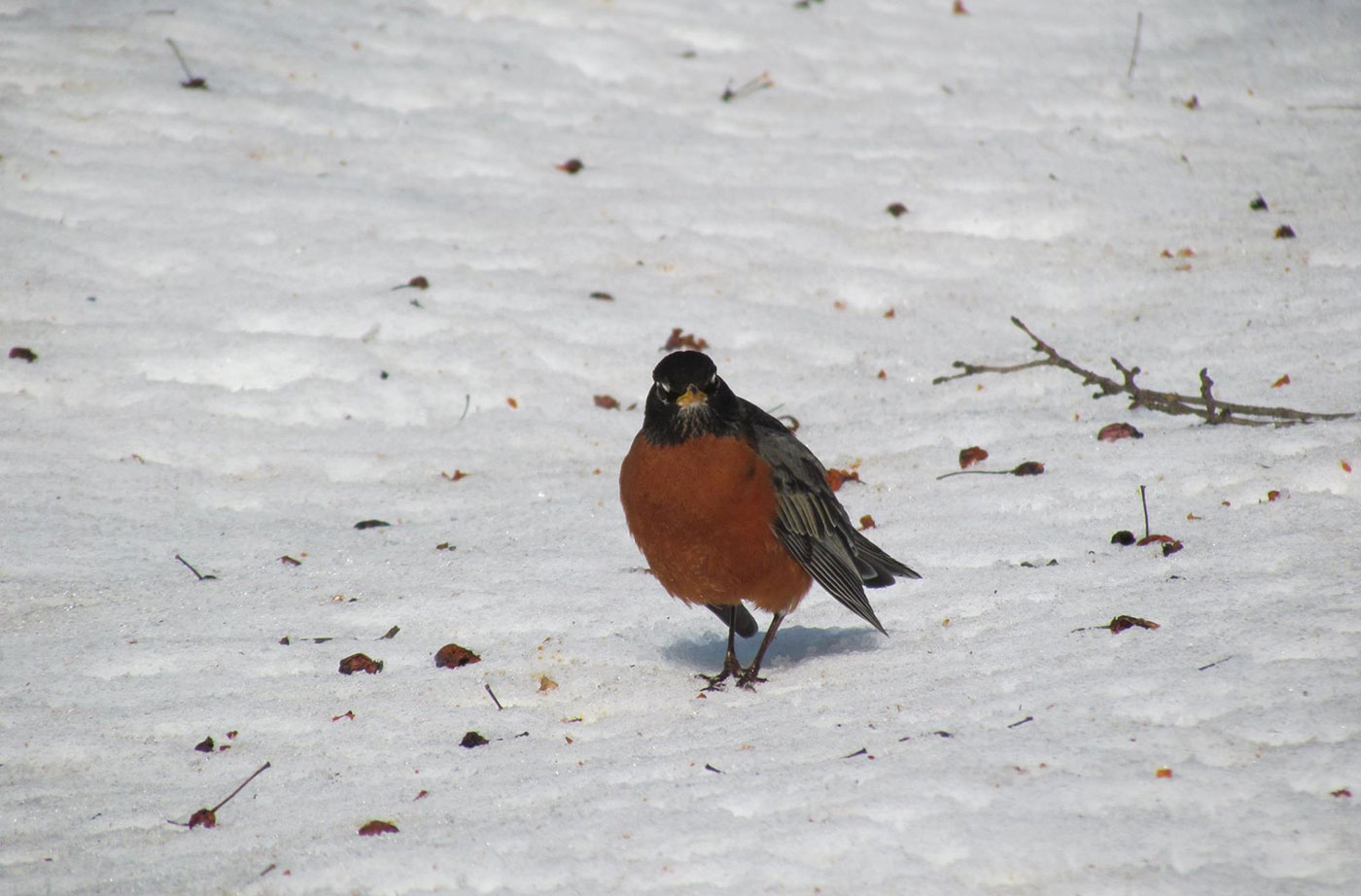Mindfulness birding. That’s how we’re describing our Maine Big Year. The Natural Resources Council of Maine has worked hard to protect many beautiful areas throughout Maine, covering a range of habitats that are important to hundreds of species of birds that breed in our state or pass through during migration. Maine is a terrific place to have a Big Year. We decided in December to try to give it a try in 2019.
If you never saw the movie “The Big Year” then you may not know that the premise of a “Big Year” in birding is that you try to see how many different bird species you can identify (by sight or sound) within a particular geographic area in a calendar year. In the movie, three avid birders, portrayed by Steve Martin, Jack Black, and Owen Wilson, compete to see the most bird species in the U.S. within a year. Based in part on a true story of three birders who competed in 1998, the winner that year found 748 species within the continental U.S. Birders can, of course, choose any particular geographic area within which to keep track of the bird species they find within a year. Some highly ambitious birders have even carried out global big years during which they may tally thousands of species (the world record is more than 6,800 species!).

Winter birding at Pemaquid Point for sea ducks such as scoters as well as for the hoped-for stray alcid such as a razorbill or murre. Photo by Allison Wells
When we lived in Ithaca, New York, we and others in the (very large and very active) birding community became aware of the annual big year efforts of a local professor and birder named Karl David who enthusiastically tried to find as many bird species as possible within the rather obscure boundaries of a watershed called the Cayuga Lake Basin. Ithaca is a small city in upstate New York where Cornell University and Ithaca College are located. It sits at the south end of long and narrow Cayuga Lake—one of the famous Finger Lakes, so called because from the high elevation view of an airplane (or as portrayed on a map) this series of long, thin, north-south oriented lakes spread across the plain south of Lake Ontario do indeed look like the fingers of a giant hand.
The lakes are unusual in that each one has its own rather extensive watershed (basin) of streams that flow into the lake from the higher lands that surround it. Cayuga Lake is no exception. Ithaca birders kept track of their sightings within the Cayuga Lake Basin for decades, but the race for finding the most birds in “The Basin” took on a new, more serious level some time after Karl David moved to the area in the 1980s. In the 1990s the Cayuga Lake Basin big year competition really took off, and for fun, it became the quest for “The David Cup.” Hopefully you’ll see the humor in that the name both honors Karl David and is take-off from the famous Davis Cup competition in tennis. In 1996 the two of us started a slightly irreverent monthly electronic publication, distributed over email, called “The Cup,” which a friend and former competitor somehow managed to archive online despite its primitive ASCII email file formatting that was a sign of the times — a great way for us all to poke fun at our collective bird-obsessed selves as we competed in the Cayuga Lake Basin Big Year.

Many people thing of the American Robin as a sign of spring, but there are usually small flocks seen around the state throughout the year, feeding in fruit trees. We added them to our Maine Big Year list earlier this month. Photo courtesy of Jeff Wells
Today, and back here at home in Maine, we have more modest goals. We want to use the impetus of doing a laid-back Big Year here in our beloved state as a way to enjoy the birds that help make each season here in our state special. Although now tempered with sadness we started 2019 with a trip to Portland where we saw the amazing Great Black Hawk and a Snowy Owl, both on January 1- what a way to start the new year, and a Big Year! Since then we have made sure not miss special winter birds like Pine Grosbeaks, Common Redpolls, and Bohemian Waxwings that may or may not be here when winter rolls around again late next year. We made a special trip to see a Canvasback while it was at Damariscotta Mills, but typically we combine our outings with errands or other travels so that we don’t become too obsessed—trust us, it’s very easy to become that way during a Big Year. If you’ve seen the movie, you know!
Our tally so far in our “mindfulness birding Big Year” is approaching 70 species. We’ll keep you updated as our adventure continues!










Looking forward to following your updates! Is your list posted anywhere?
Thanks, Leda Beth! We will definitely be sharing the list regularly. We just added Horned and Red-necked Grebe, Barred Owl, and a few other species (Allison added Dovekie, which Jeff already had) over the weekend. Great to hear from you!